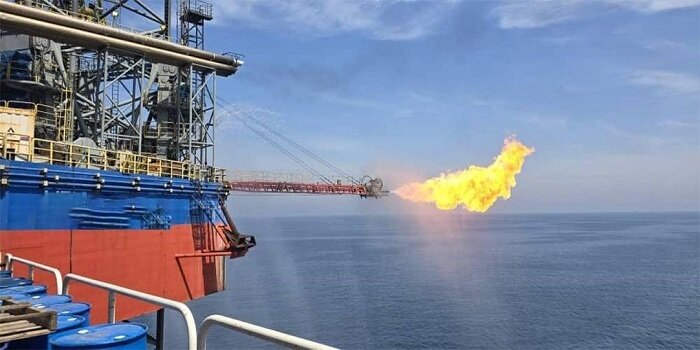Iran Brings 8th well of South Pars phase 11 online adding 3 mcmd to gas output
Iran Brings 8th well of South Pars phase 11 online, adding 3 mcm/d to gas output
TEHRAN - Iran has brought the eighth well of Platform B in Phase 11 of the South Pars gas field into production, adding approximately 3.0 million cubic meters per day (mcm/d) to the country’s natural gas output, according to the head of Petropars Group.

Hamidreza Saqafi, the head of Petropars, told state media that the achievement was the result of close coordination with Pars Oil and Gas Company and a collective commitment to national goals.
“This marks a significant step forward in the development of Phase 11 and in expanding Iran’s gas production capacity,” he said, adding that Petropars remains committed to implementing South Pars development projects with the highest quality and speed to ensure sustainable energy supply.
Saqafi said the development process for Phase 11 will be completed by the end of the first month of the Iranian year 1404 (late April 2025), leading to a notable increase in output from the field.
Ali Nadiran, project director for Phase 11 at Petropars, highlighted the technical specifications of the well, noting that it was drilled to a depth of over 4,200 meters. The perforation process has been completed in the Kangan and Dalan reservoir formations. He added that the well is currently undergoing flowback and cleanup operations following acid stimulation.
The South Pars gas field, located in the Persian Gulf, is the world’s largest natural gas reserve shared between Iran and Qatar. Iran’s portion of the field is divided into 24 development phases, with each phase representing a different segment of production and infrastructure. The field is the backbone of Iran’s domestic energy supply and a key component of its petrochemical and export ambitions.
Development of the field began in the late 1990s and has proceeded in stages, often influenced by foreign investment, sanctions, and shifting energy policies. While several phases are fully operational, others—including Phase 11—have experienced years of delays due to technological and geopolitical challenges. Phase 11 is among the most technically complex sections of the field, located near the maritime border with Qatar, and is expected to significantly boost output once fully operational.
Despite facing limitations due to international sanctions, Iran has increasingly turned to domestic companies such as Petropars to continue development work. The addition of new wells in Phase 11 reflects Tehran’s strategy to accelerate upstream investments and reduce the gap in gas output with neighboring Qatar, which has extensively developed its share of the shared field.
EF/MA
source: tehrantimes.com